A guy I barely knew (and whose name I can no longer remember, alas) was a stringer for LIFE magazine back in 1965, found out there was a young black man winning a bunch of tennis tournaments. He suggested to the editors that we do a story about him, as there were really hardly any black tennis players, and if there were, they weren’t winning very much. As luck would have it, that very week was a tournament in Texas, and LIFE flew me down there to cover it.
I didn't know what to expect, but the minute I arrived at the Colonial National Country Club in Fort Worth, I ran into him after a match, and made this photo.
He was walking away from a victory at the start of the tournament, and notably he’s the only colored person in view. That was normal in the world of high powered tennis, and not only in Texas. Also, I was soon to realize that sports photography (which I had never done before) isn’t as easy as it looks. If your athlete/subject isn’t moving, it’s not a dramatic shot; and if he is moving, he’s a blur. For days, the matches I covered were visual washouts for me, and I had shot quite a number of pictures. Was I getting worried I would blow this assignment? Yes.
Finally, and only once, I made a snap that showed the grace, and the force, of Arthur’s rocket serve.
Yes, he won. Fred Stolle was the runner up.
…And, later, had supper at the Country Club.
It seemed to me that the story LIFE assigned me to do was more about the man than about the sport. The way Ashe handled himself as he made his way through life was more exemplary, I thought, than his undoubted tennis skills. The story became, for me: Not what his tennis was like, but what his life was like.
His self confidence was not affected by his race. The opposite was more apparent. He wanted to be part of the change in the racial perspective of the country.
He had driven himself from Los Angeles to Wort Worth in his car, and when it was time for a return I hitched a ride and helped share the driving. On the way, we talked a lot about Martin Luther King and the March, which I had covered a couple of years before. About halfway, in Arizona, I made this shot:
Ashe had been awarded a tennis scholarship to UCLA in 1963. Ashe was also a member of the ROTC which required him to enter active military service after graduation in exchange for money for tuition. He was active in other organizations, later pledging the Upsilon chapter of Kappa Alpha Psi and becoming a member/brother of the fraternity. During his time at there, he practiced regularly with his sporting idol, Pancho Gonzales, who lived nearby and helped hone his game. He had friends who were a bit overwhelmed by his continual winning exploits. His practice schedule that was dauntingly super-human. He didn’t have an entourage.
I stayed with Ashe for about a week and made thousands of photos of him. The picture above has been a consistent seller for me, and the one below is the moment Arthur Ashe first met fellow UCLA sports idol, Lew Alcindor.
As Ashe was 6’1”, this shows the brilliant basketball guy’s real height. Later in life the two formed a partnership, and the newly renamed Kareem Abdul-Jabbar asked me for a copy. It’s another important picture from the files.
And lastly, this pretty strong portrait:
What is bothersome (to me) happened when the story appeared in LIFE. Few if any of the photographs shown here made it into the mag. I can’t remember all of it, except that I felt disappointed about LIFE’s editing skills.
Arthur and I stayed in contact for a while, but then lost touch. Still a fan, but with my own life in disarray, I followed his career fairly closely. Two years later he was ranked number one in US tennis, and in 1975 won the Wimbleton title.
His achievements, not only on the tennis court, but also in international racial relations had become legendary. As captain of the US Davis Cup team, we won three successive times. He was ATP Player of the Year, and inducted into the Virginia Sports Hall of Fame, which at the time commented: "Arthur Ashe was certainly a hero to people of all ages and races, and his legacy continues to touch the lives of many today. For Arthur Ashe, tennis was a means to an end. Although he had a lucrative tennis career, it was always more than personal glory and individual accolades. He used his status as an elite tennis player to speak out against the moral inequalities that existed both in and out of the tennis world. Ashe sincerely wanted to bring about change in the world. What made him stand out was that he became a world champion along the way."
In 1988, Ashe published a three-volume book titled A Hard Road to Glory: A History of the African-American Athlete, after working with a team of researchers for nearly six years. Ashe stated that the book was more important than any tennis titles.
A movie, “Citizen Ashe,” came out in 2021. There wasn’t much visual material existing from his amateur days, except for my stuff! So most of the pictures seen here finally saw daylight.
Jeanne Moutoussamy, his widow, discovered my pictures of Arthur in a New York window. She contacted me to discuss the photographs and then to arrange a show at the main stadium at the USTA National Tennis Center in Flushing Meadows Park, where the US Open is played. And this picture is prominent there. Why, you ask?
Because it is named Arthur Ashe Stadium.

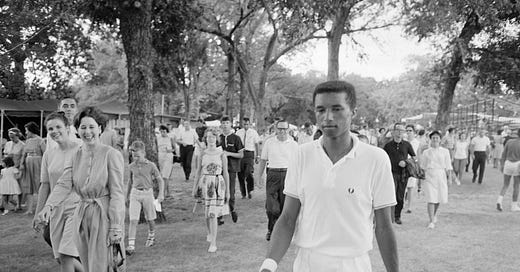



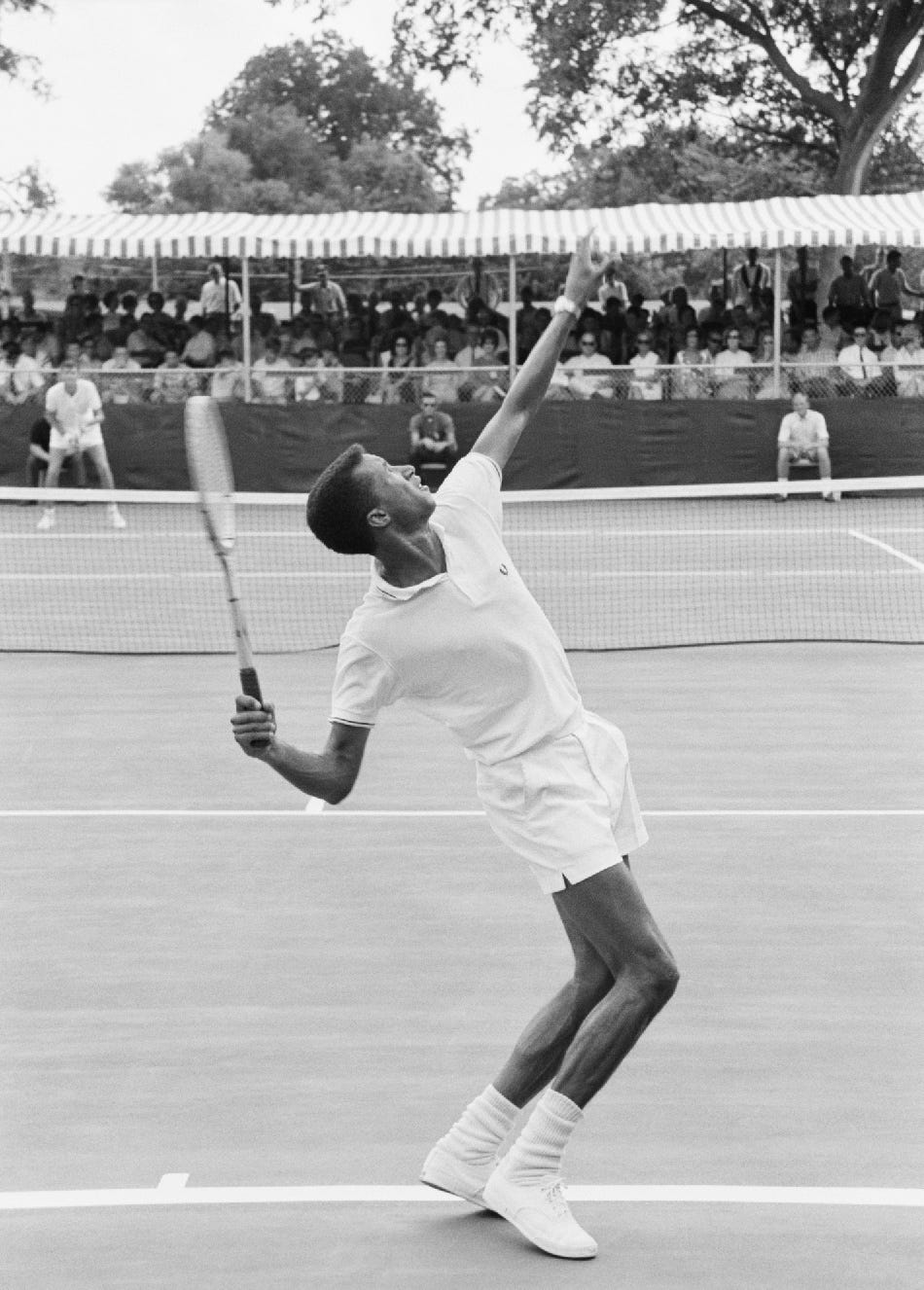

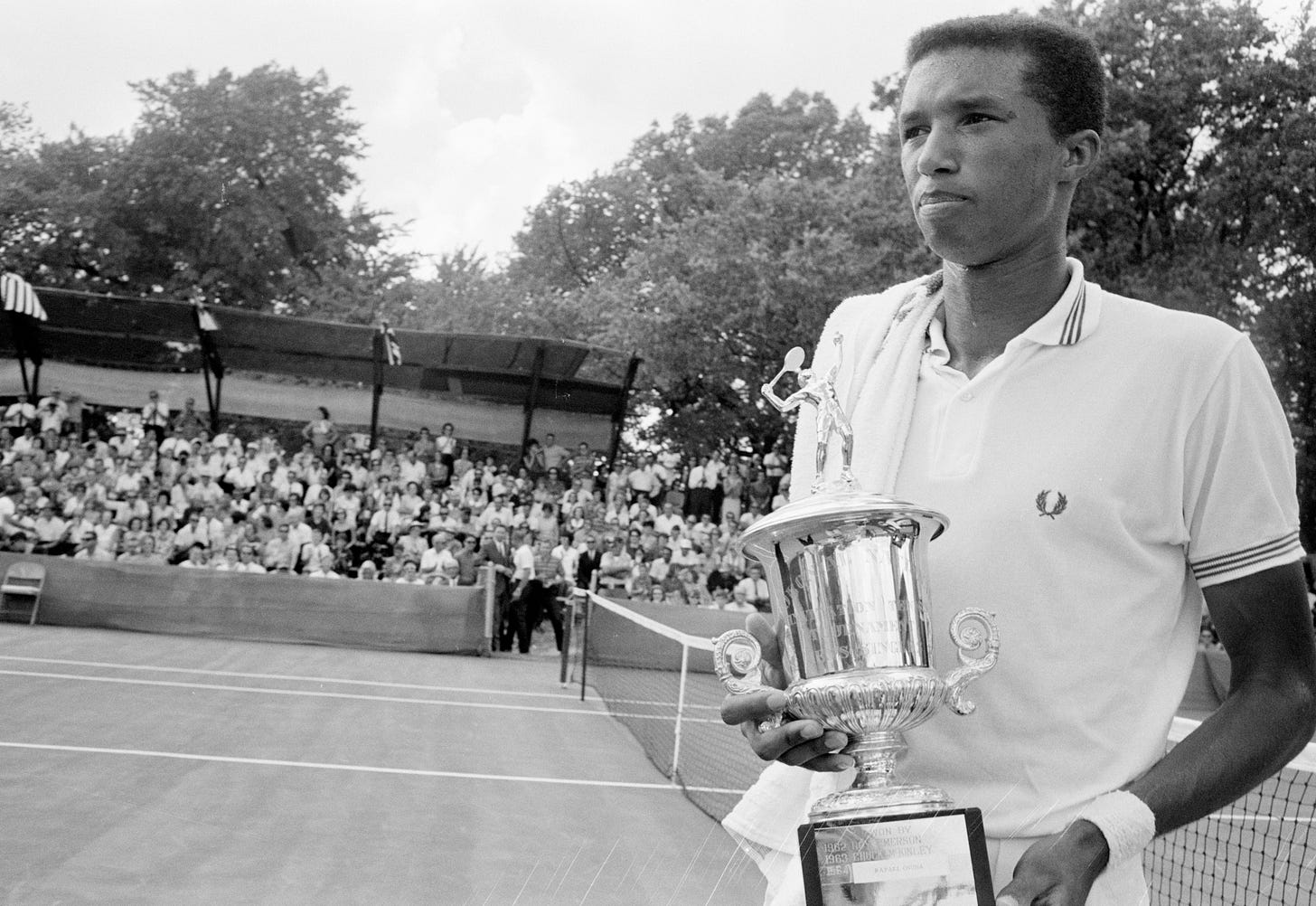
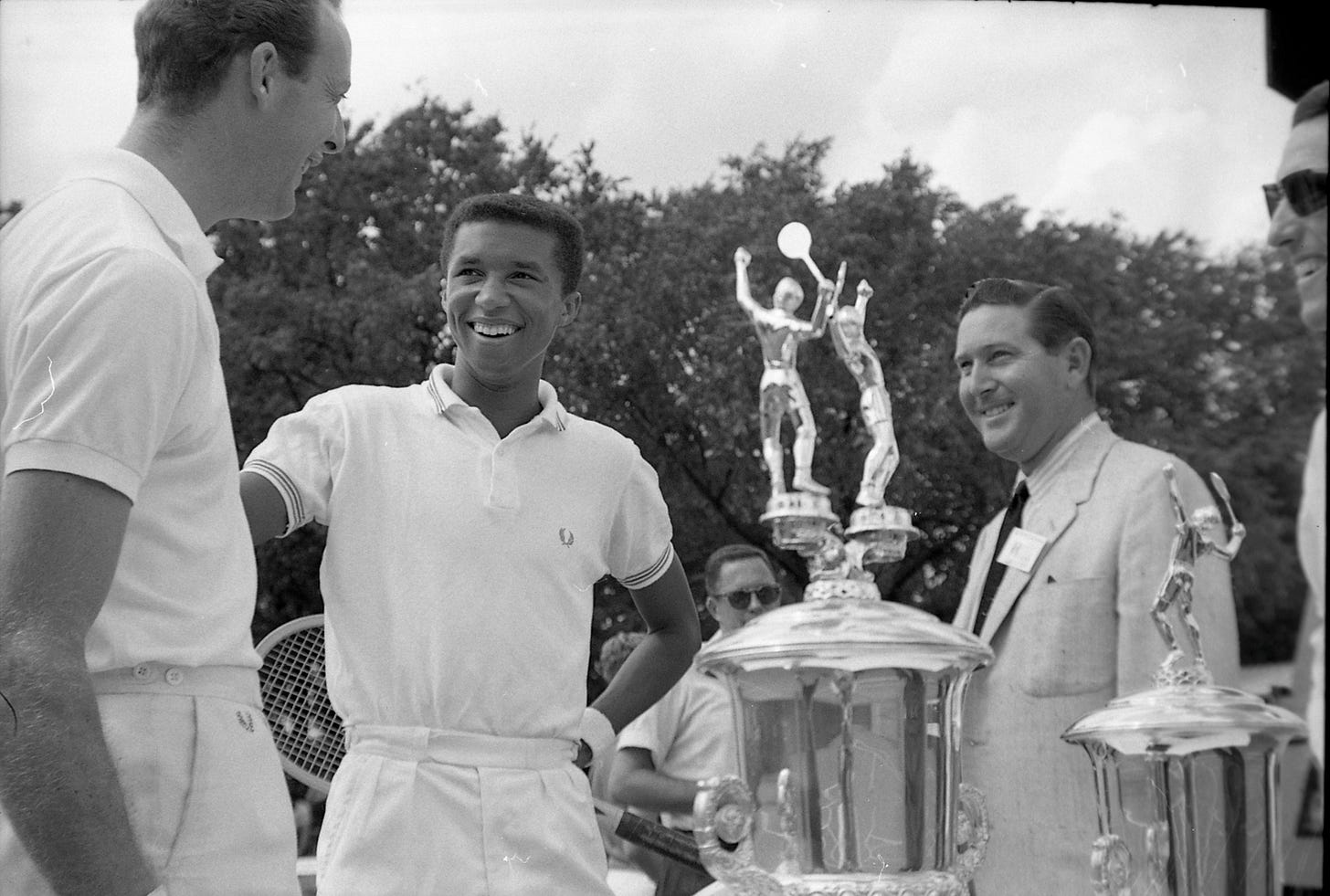

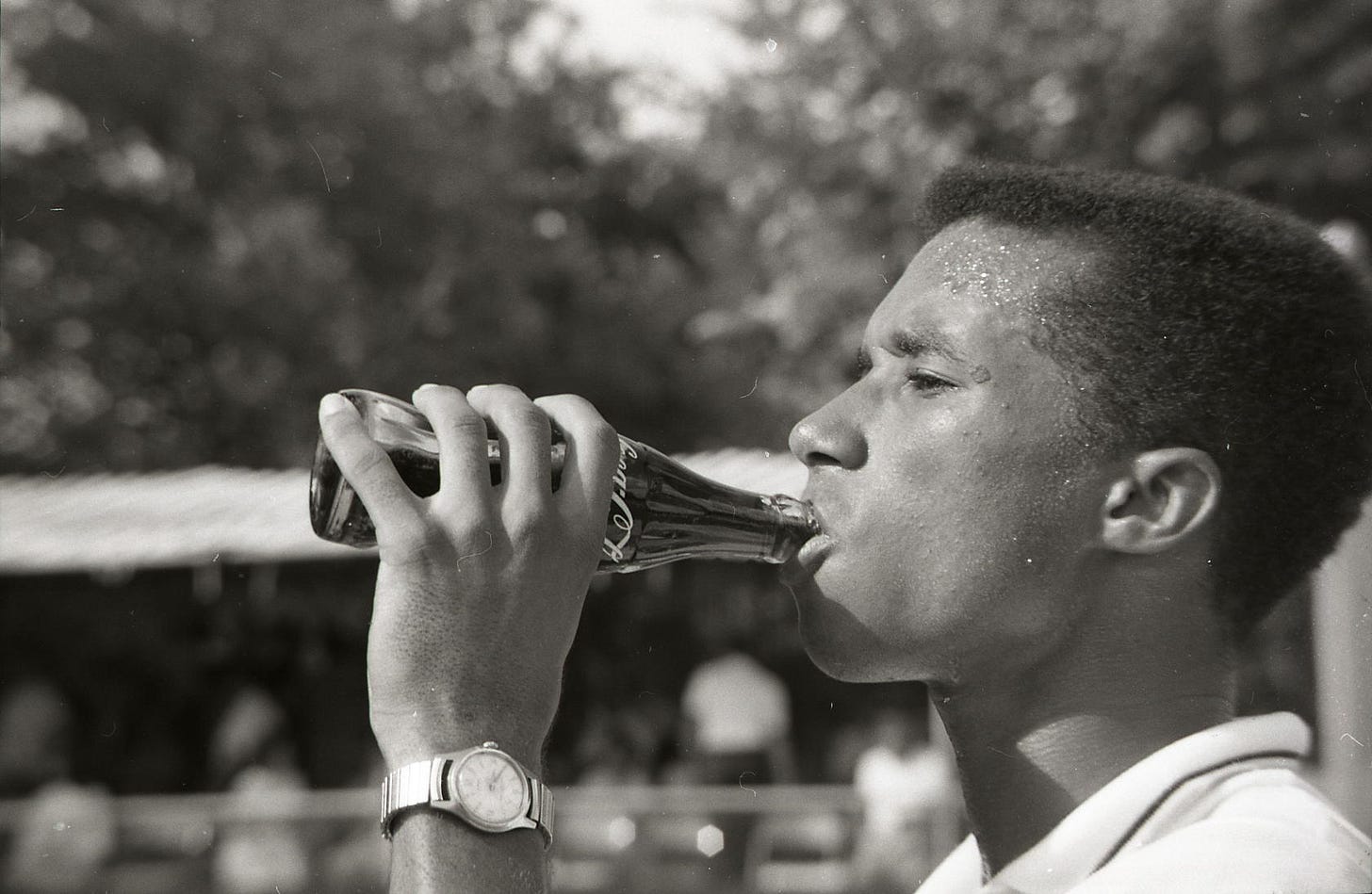

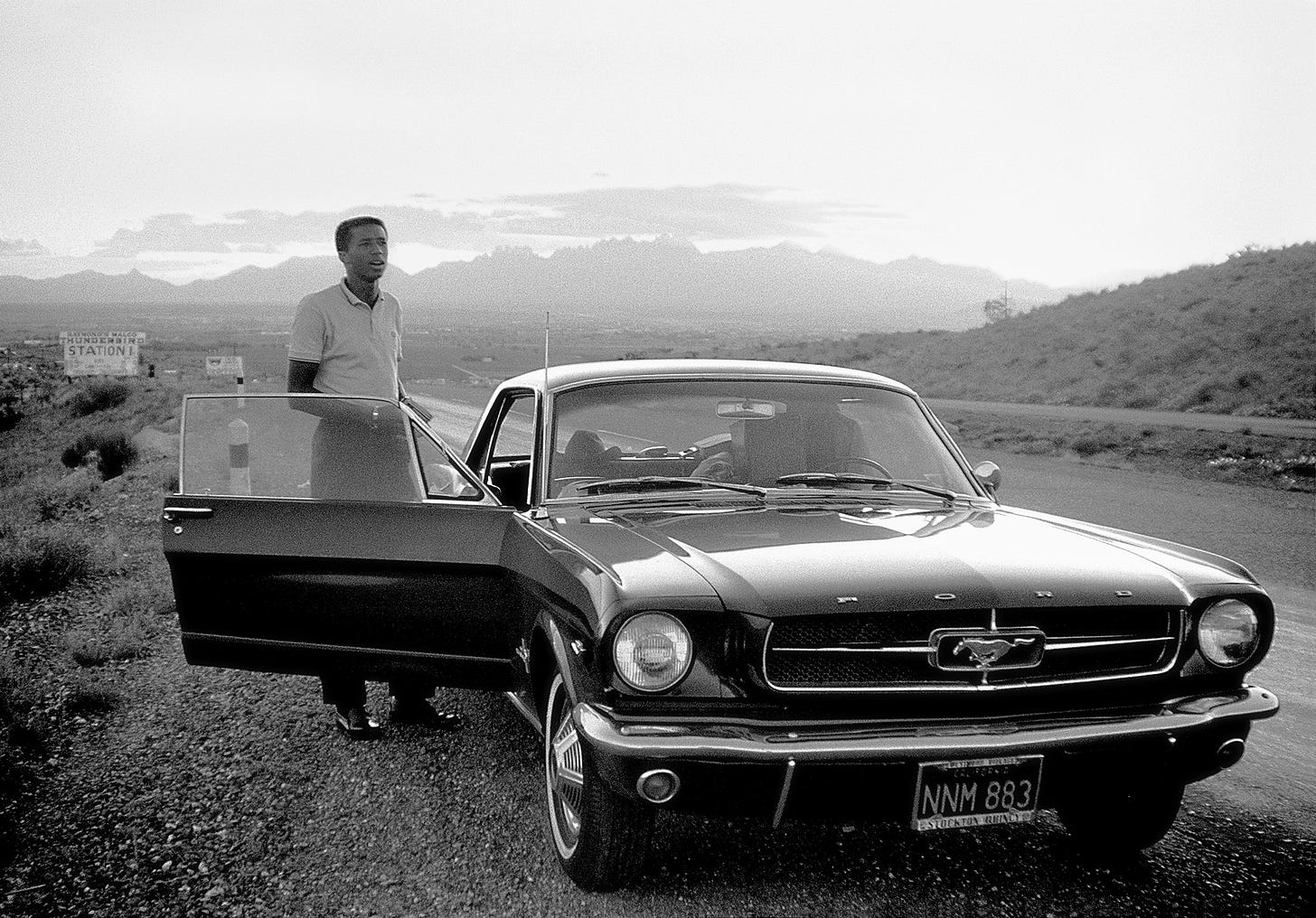
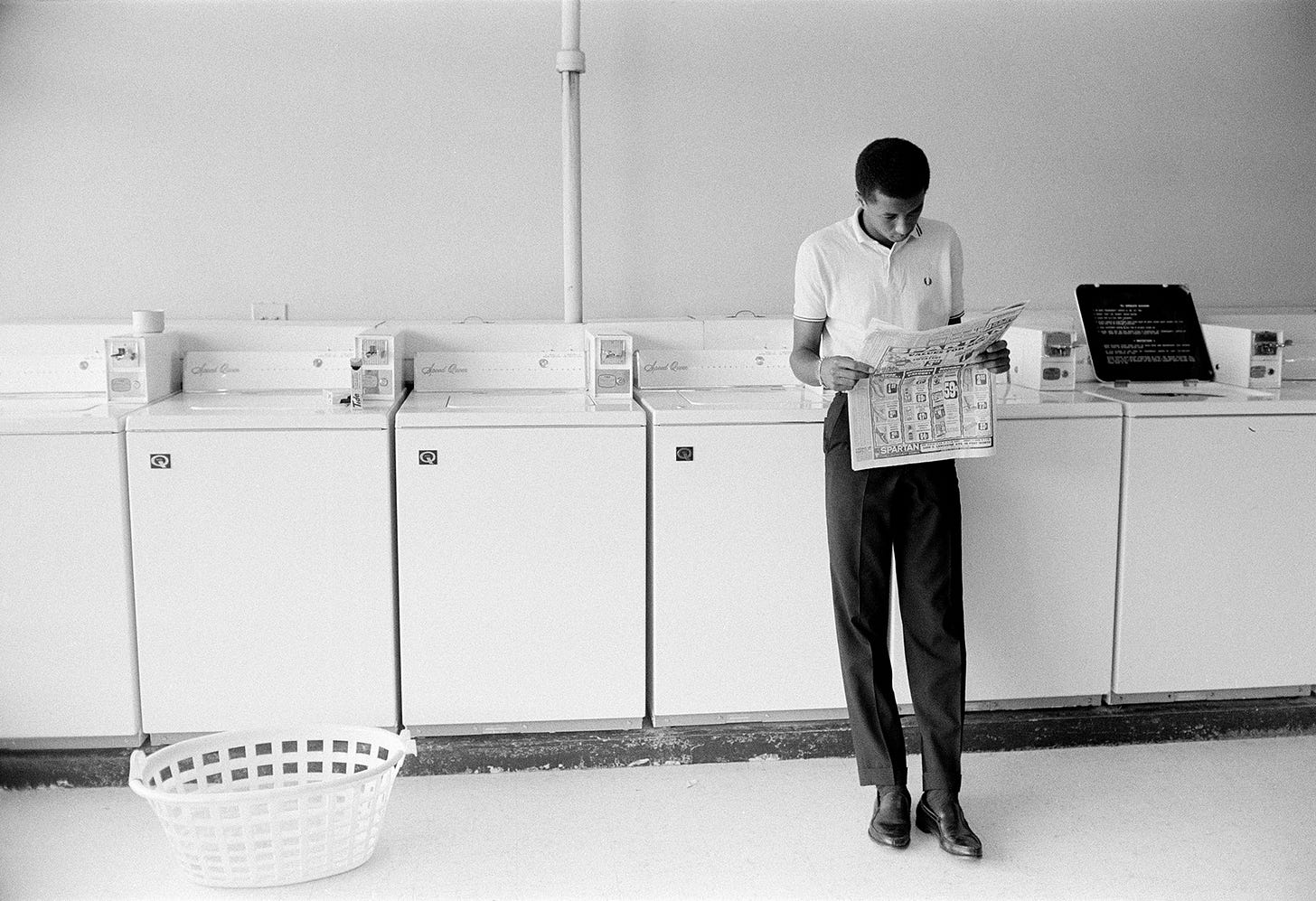
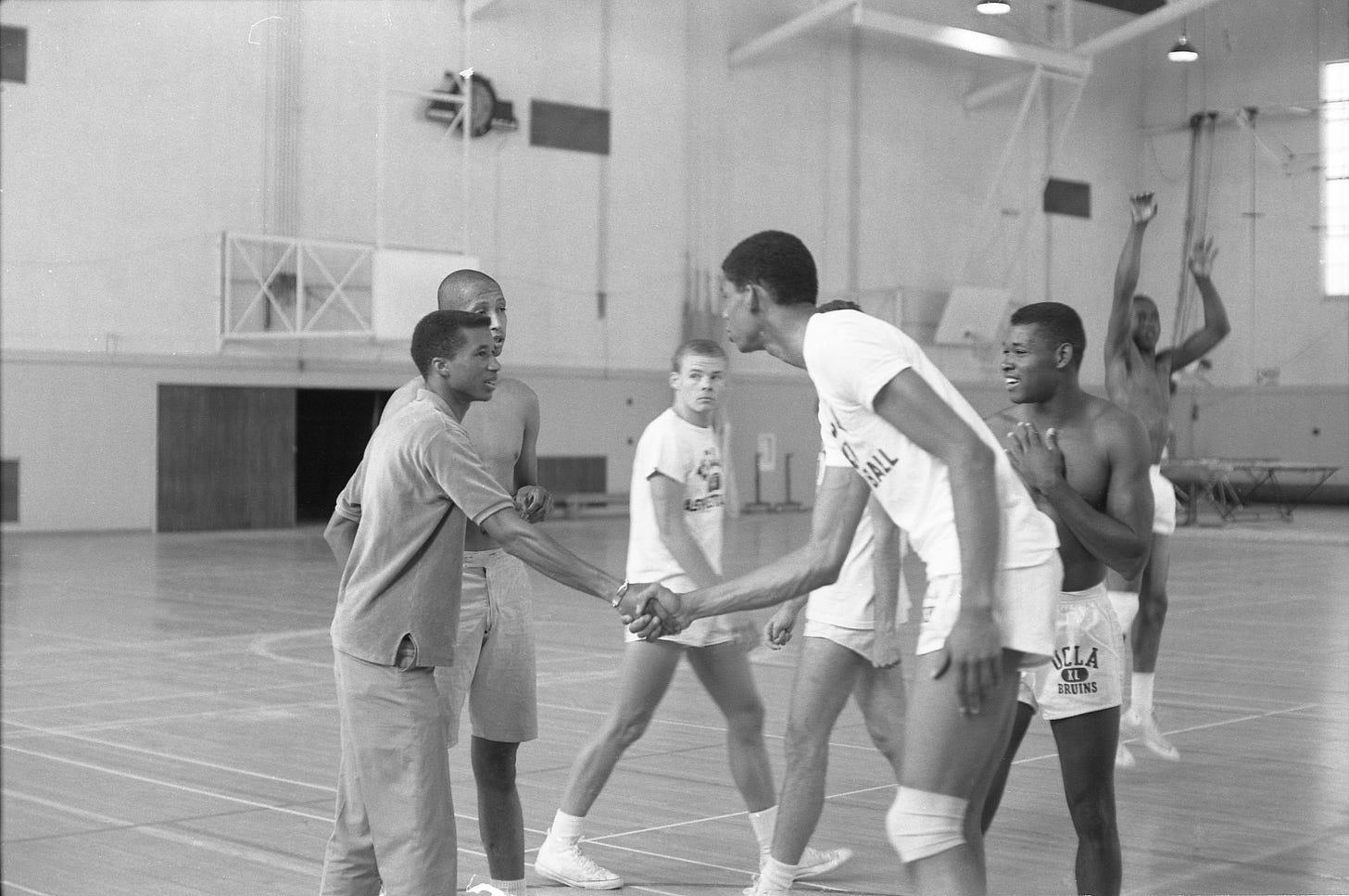
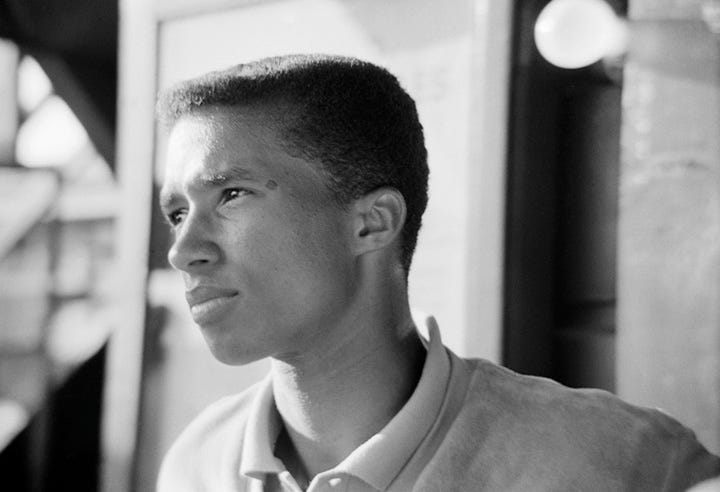

I enjoyed your photo story on Arthur Ashe.
Hi,
So glad you are doing these photo essays. Miss seeing you. If you ever come back to AL,
let me know. Was just talking about Joe yesterday and Father Touhy. :)